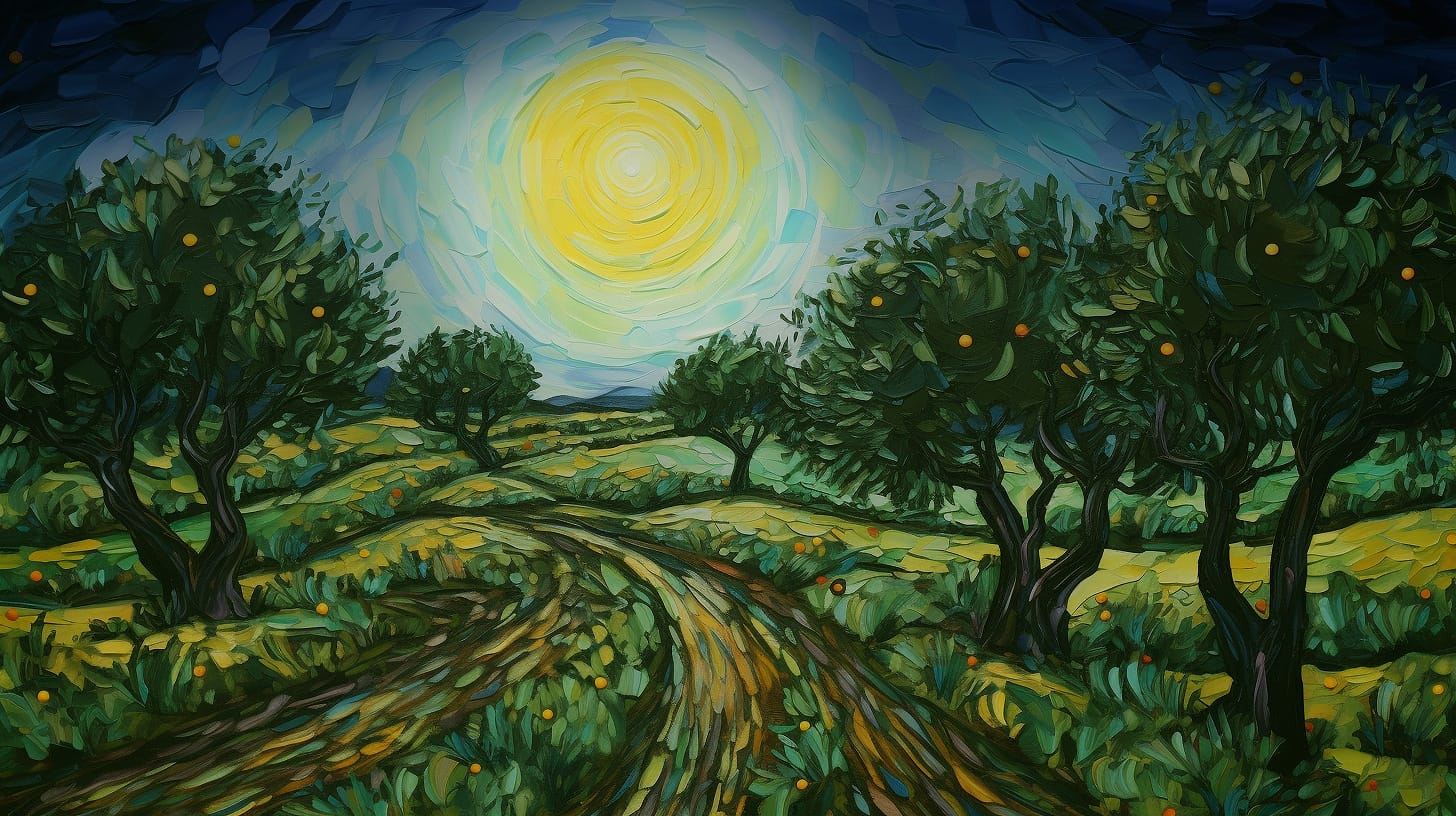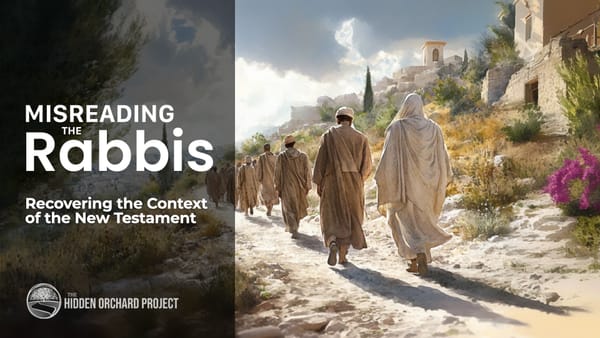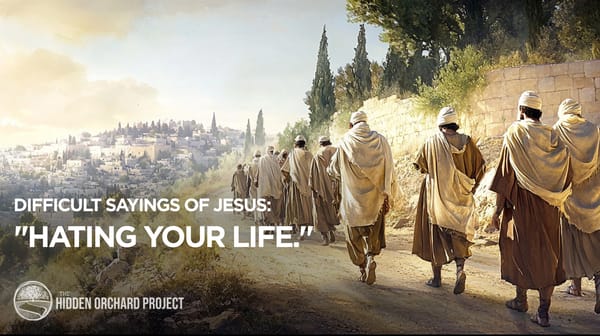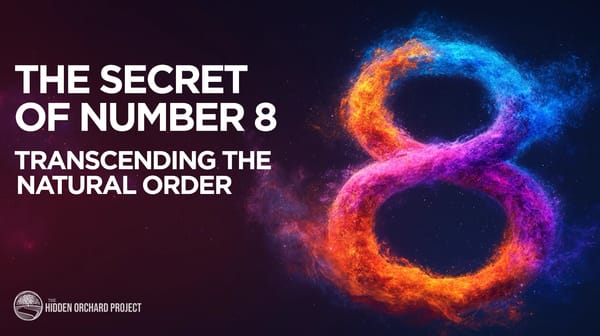What Comes After Heaven? A Guide to the World of Souls and the Olam HaBa
Is heaven the soul's last stop, or is there more? In this article, we will explore the tradition behind the ideas of the Messianic era, Heaven, and the World to Come - including a few key references to these in the New Testament.
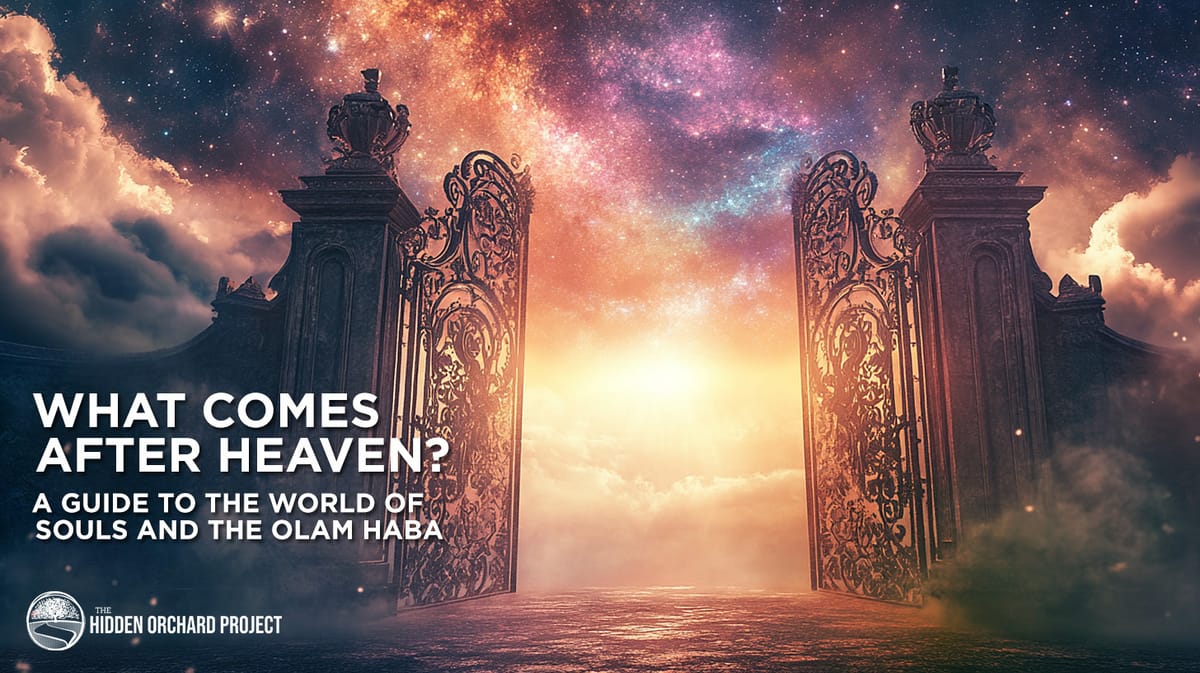
The word "heaven" often conjures images of paradise - clouds, harps, and maybe a few halos. The predominant assumption for many, an idea almost universal in Christianity, is that heaven is eternal.
Those who have begun to study the Jewish tradition have found a set of ideas, from Gehinnom¹ to the Garden of Eden, the Messianic era, the resurrection of the dead, and the World to Come. It can be confusing and difficult to know how to reintegrate these ideas.
This article will explore these concepts, beginning with Biblical texts and tracing them through tradition to find understanding.
Heaven in the Bible
To begin, the Hebrew word often translated as heaven is Shamayim (שָׁמַיִם). Throughout the texts, heaven represents many ideas, for example:
- Stars, planets, and celestial bodies. (Genesis 1)
- The place from which blessings come. (Psalm 78:23-24)
- An allusion to the otherworldly dwelling place of G_D. (1 Kings 8:23)
By the late Second Temple era, a phrase like: "the kingdom of heaven," as seen in Matthew 16:19, may have been used as a circumlocution to avoid pronouncing the Name of G_D.
The Hebrew Bible is not explicit about heaven (at least not in the popular sense) as the final destination of righteous souls.
Rabbinic interpretative methodologies² inform us that the word Shamayim is a combination of the words for Fire (Aish) and Water (Mayim) - alluding to a paradoxical reality.
Seven Heavens
A surprising fact for some is that the word Shamayim is plural - literally, heavens. Ancient literature³ thus identifies (7) levels of heaven each with unique characteristics.
In ascending order, they are Vilon, Rekia, Shechakim, Zebul, Maon, Machon, and Aravot.
The first level, Vilon, serves as a veil that facilitates the cycle of darkness and light through a 24-hour period.
The second level, Rekia, or firmament, is the location of the stars and celestial bodies.
Notably, the third level of heaven is known as Shechakim. I believe Shechakim is the root of the popular understanding of heaven. Below, we will explore some examples of its appearance in the New Testament.
Gan Eden, Paradise
Shechakim is also known by other names in the Rabbinic tradition, such as Paradise, and the [spiritual] Garden of Eden, (in Hebrew, Gan Eden).
After a person has passed from this existence, and has undergone a series of purifications⁴, their souls are said to move on to Gan Eden.
Gan Eden is not an everlasting destination, but a kind of temporary holding place, an intermediate state, where righteous souls bask in the radiant peace and revelation of the Creator's light.
In Gan Eden, the righteous souls await the future reunification with their physical bodies. This future event is known as the "Resurrection of the Dead" (Techiyat HaMetim) and is synonymous with the World to Come.
The Present World - The World to Come
Gan Eden, and Gehinnom, are spiritual aspects of the age we're currently living in, known as the Olam HaZeh, (the Present World).
Tradition teaches that the Olam HaZeh will exist for 6,000 years before the arrival of the Messianic era⁵. Generally, the Messianic era is not considered part of the Olam HaZeh.
Though there is discussion as to how long the Messianic era will be - from a few years to 1,000 years - this period of time serves as a transition into the World to Come (Olam Haba).

Surprisingly, the World to Come is not the end of the journey itself as all of creation will continue to undergo continual renewal and elevation.
The question some might have is, whether or not this tradition has anything to do with the New Testament. We will look at a few examples of many.
New Testament References to Gan Eden
Tradition tells us that Gan Eden is comprised of many levels, each corresponding to the level of righteousness one attained in life. It is worth noting here that Gehinnom is also taught to have many [descending] levels correspondent to the sins one has accrued.
Nevertheless, these levels of Gan Eden are sometimes referred to as "mansions" or "rooms" in the mystical tradition. We see reference to this in John 14:
In my Father’s house are many rooms. If it were not so, would I have told you that I go to prepare a place for you? - John 14:2
Jesus warns against behaviors that will result in someone only attaining the lowest levels in the Kingdom.
Therefore whoever relaxes one of the least of these commandments and teaches others to do the same will be called least in the Kingdom of heaven, but whoever does them and teaches them will be called great in the kingdom of heaven. - Matthew 5:19
Yet, in another place, he teaches that the lowest level in Gan Eden far surpasses our current reality:
I tell you, among those born of women none is greater than John. Yet the one who is least in the kingdom of God is greater than he.” - Luke 7:28
In accordance with the tradition, Jesus makes the following statement to one of those crucified with him:
And he said to him, “Truly, I say to you, today you will be with me in paradise.” - Luke 23:43
The Apostle Paul also claimed to have visited the Third heaven⁶. Lastly, we see Gan Eden mentioned in Revelation:
He who has an ear, let him hear what the Spirit says to the churches. To the one who conquers I will grant to eat of the tree of life, which is in the paradise of G_D.’ - Revelation 2:7
There are many more references worth exploring.
The World to Come
Somewhere in the transition to the World to Come, the current structure of reality will be rearranged and reintegrated into the upper spiritual reality. This is the underlying meaning of Jesus's statement in Matthew 24:35:
that"heaven and earth shall pass away..."
So, it is not that the world is ending, just that it is ending as we know it. Through this, it is taught that Gehinnom (Hell) will no longer be necessary, and those in Gan Eden will be taken higher.
Conclusion
This perspective challenges some popular doctrines of salvation⁴ and the afterlife.
It also reframes the future, not as an escape, but as the culmination of divine restoration of the physical and spiritual.
This tradition has profound implications for how we live in Olam HaZeh, that is, the here and now. The commandments⁷ are not tickets to paradise; they are acts of transformation that carry us to higher levels of elevation.
Heaven is not the ultimate goal, restoration is.
This is why the way we spend our time in this world is of such importance in the Biblical tradition. As the Sages have said⁸,
“This world is like a vestibule before the World to Come.”
Want to Learn More?
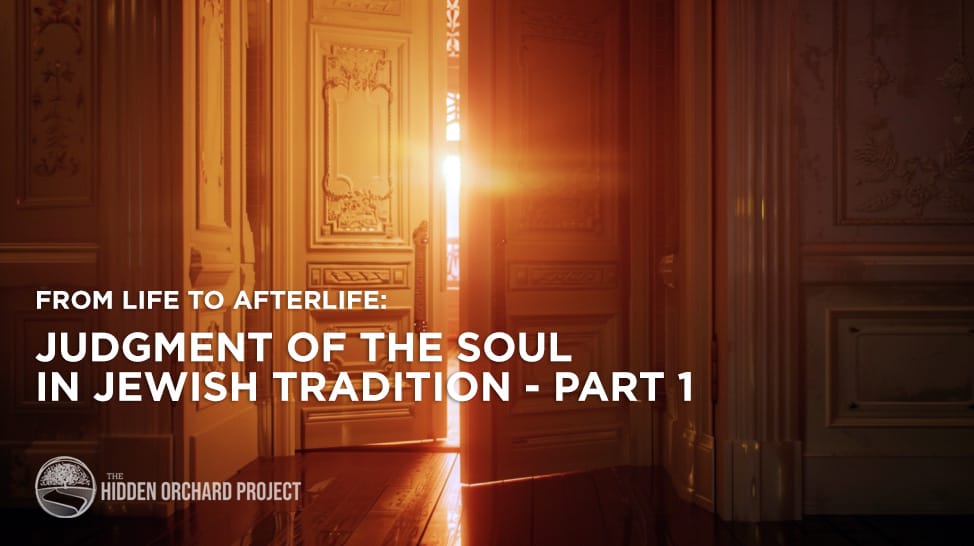


Notes:
² Pardes - Jewish Hermeneutics
³ For example, see Talmud Chagigah 12
⁴ Salvation Part 1 & Salvation Part 2
⁷ Mitzvot and Misconceptions: Understanding the Biblical Commandments
⁸ Pirkei Avot 4:16

